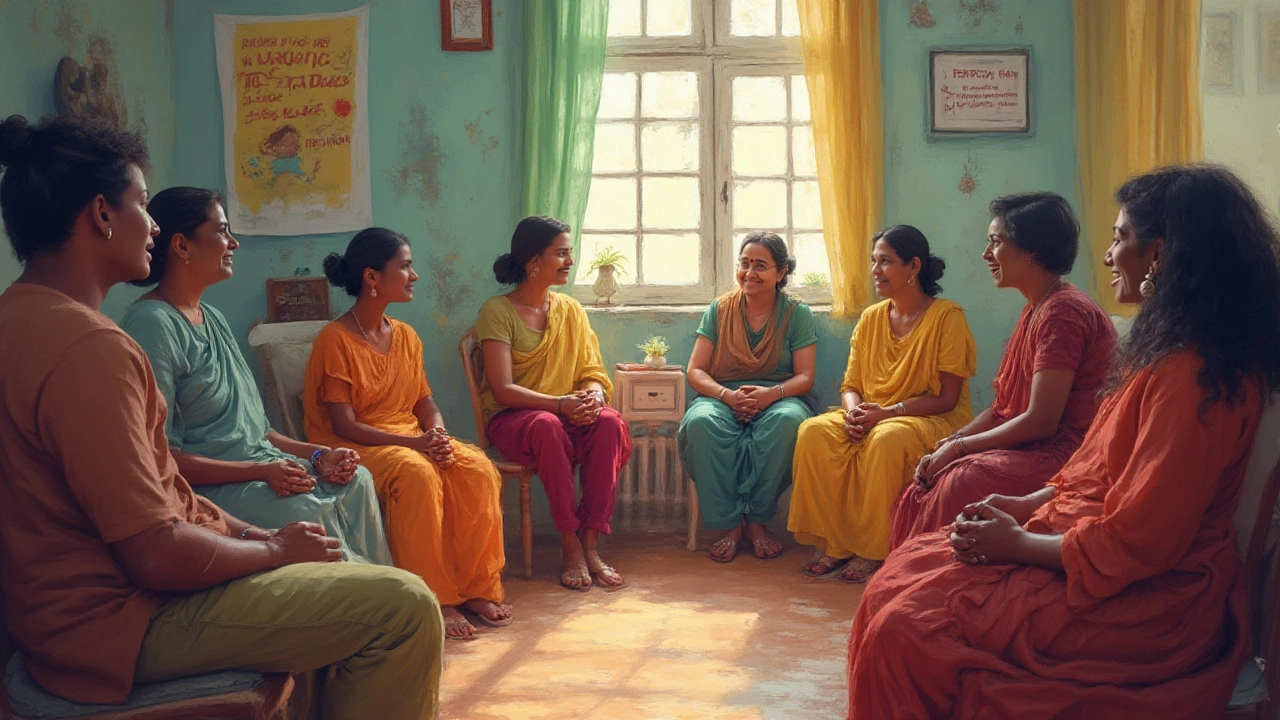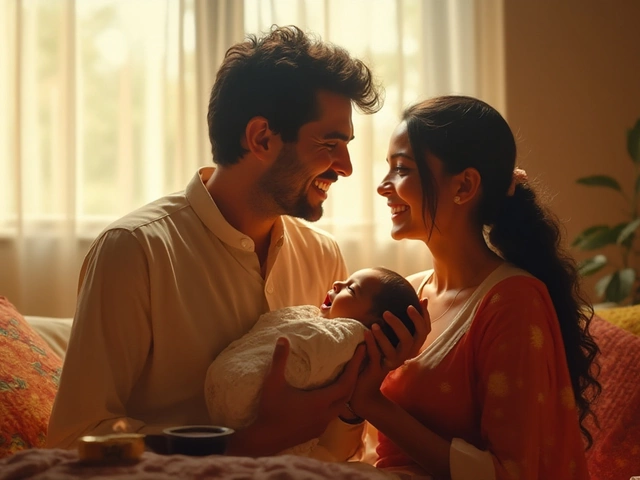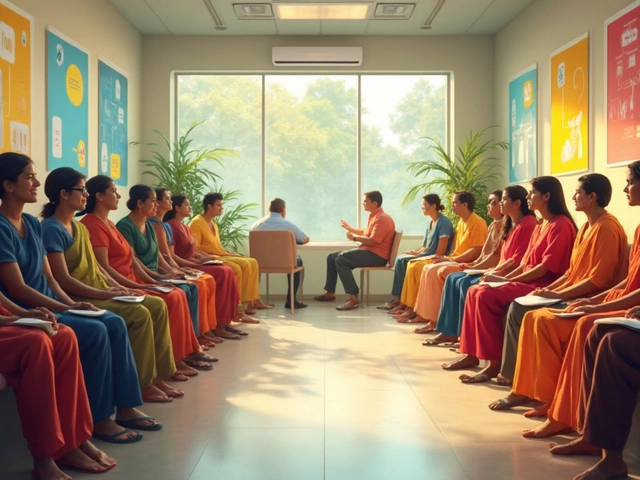
If you’re searching for exact numbers, you won’t find them on a calendar. The question “How long can a cancer patient live?” unnerves families everywhere—nobody wants to talk about it, yet everyone wants to know. I get it; uncertainty is exhausting. Cancer isn’t a straight path. It’s more like a bumpy, unpredictable ride in a car with no GPS and the weather always changing. But that doesn’t mean we can’t look at the dashboard, see the warning lights, and get a sense of direction.
Breaking Down the Myth: Survival Rates and Real Numbers
There’s a lot of noise online about how long a person with cancer can live. Some stories talk about miraculous recoveries, others about heartbreakingly short fights. The truth sits somewhere in between and depends on issues like the type of cancer, when it’s caught, and how a person’s body responds to treatment. Here’s a reality check: looking for just ‘one number’ won’t work. There’s no magic figure because each cancer is its own beast.
Let’s get into some real stats. In 2025, the American Cancer Society shared that the five-year survival rate for all cancers combined in the US is about 69%. That means nearly 7 out of 10 people diagnosed today will be alive five years from now—thanks to earlier detection, better medicines, and more tailored treatments. But even within those numbers, there’s loads of variety. For example:
| Cancer Type | Five-Year Survival Rate (US, 2025) |
|---|---|
| Breast (female) | 91% |
| Prostate | 98% |
| Colon | 64% |
| Lung | 25% |
| Pancreatic | 12% |
| Leukemia | 68% |
Those numbers have improved over the years. In 1975, for example, the overall five-year survival was only around 50%. It’s incredible to see progress, but there’s still a long way to go, especially for aggressive types like pancreatic or lung cancer.
Let’s talk about what “life expectancy” actually means in this context. Doctors might mention “median survival,” which is a fancy way of saying half the patients live longer, half don’t. For instance, if a median survival is 12 months, that doesn’t mean a patient can only expect to live for a year. Some live much less, a surprising number live much more. These stats are based on large groups but can’t predict what will happen with a single person.
Why the range? Tumors grow at different rates. Someone with early, slow-growing prostate cancer may die of old age before the disease ever causes trouble. At the other end, advanced pancreatic cancer tends to spread fast, often despite tough treatments. There are also rare cases where people beat the odds, living far longer thanks to cutting-edge therapies, trials, or just plain luck.
Here’s the fact that’s rarely talked about: people handle cancer very differently, even with the same diagnosis. Age, other illnesses, lifestyle, support, and even attitude make a real impact. In my own circle, I’ve seen a close friend—let’s call him Arjun—recently push past a predicted six-month timeline thanks to unshakeable optimism, good doctors, and unwavering family support. Arjun’s been living well into his second year, still defying the clock.
So should families hang onto hope? Absolutely. But it helps to stay anchored in facts, keep expectations realistic, and talk openly with the doctors. They’ll have the inside scoop based on real scans and lab work, because that’s always more important than statistics from Google.

What Changes the Timeline: Hidden Influencers of Cancer Survival
What makes some people outlive their prognosis while others don’t reach it? That’s where things get tricky. Doctors call these “prognostic factors,” and most folks don’t realize how many pieces affect the puzzle.
- Stage at Diagnosis: This is the heavyweight. Early-stage cancers have better odds since they’re smaller, haven’t spread, and generally respond better to treatment. Catching breast or colon cancer early might mean surgery, a little chemo, and years of symptom-free living. Advanced-stage cancers—think stage 4 or ‘metastatic’—are harder to control, though treatment can often add months or even years.
- Cancer Type and Subtype: Two breast cancers might act nothing alike. Some cancers grow slow (like many prostate cancers), while others are aggressive (think pancreatic or small cell lung cancer).
- Age and General Health: A healthy 40-year-old facing lymphoma deals with it very differently than an 82-year-old with heart disease. The body’s ability to handle tough treatments—chemo, radiation—matters a lot. Being physically active before diagnosis actually improves odds.
- Treatment Response: Sometimes cancer cells just laugh at chemo and forge ahead; other times, they shrink fast. Genetics play a surprise role. Some mutations—for example, HER2-positive breast cancer—used to mean poor outcomes, but with new drugs, people now live much longer.
- Access to Care: Where you live changes everything. Someone in a city with access to clinical trials and new drugs may get years of extra time compared to someone in a remote area. Wealth and insurance still affect cancer outcomes more than anyone likes to admit.
- Attitude and Social Support: It’s not just fluff—studies from Harvard and elsewhere found that patients with strong family (shoutout to Anjali, my rock), friends, or even cancer support groups handle side effects better and are more likely to stick with treatment. That, in turn, can keep them going longer.
- Previous or Other Health Conditions: Someone with diabetes or kidney problems might have trouble tolerating certain cancer drugs, so doctors make adjustments.
Then there’s the wild card—new treatments. Immunotherapy, targeted therapies, and even cancer vaccines are shifting survival stats. Melanoma used to be a death sentence when it spread, but now, with checkpoint inhibitors, there are patients living close to a decade or even longer after diagnosis. Chronic myelogenous leukemia (CML) is now practically a manageable condition for many, thanks to daily pills that weren’t even available twenty years ago.
Here’s a little reality check: Not all treatments work the same way for every case. If a drug extends life by three months in clinical trials, it’s just an average—some will get none of those months, others will double it. Ask your doctor about your specific case, including access to clinical trials. These can make a big difference.
And don’t forget the role of stubborn determination. I've read about marathon runners who kept training between chemo cycles and outlasted every prediction. My uncle, who taught chess, made it his goal to finish every tournament even after his diagnosis—and he did for two more years.
If you want to boost your own odds (or just feel like you’re doing something), here’s a simple list of tips from oncology teams who’ve treated thousands:
- Don’t skip appointments, even on rough days. Early intervention for side effects can keep treatment on track.
- Stay active and eat well, even if food tastes weird. Simple walks work wonders for most.
- Ask about genetic testing. Sometimes there’s a drug that works best for your cancer’s specific DNA.
- If a doctor isn’t answering your questions, find one who will. Communication is key.
- Look into cancer support groups. Talking to people on the same journey makes things less isolating.
Every patient is unique, and so is every survival story. The stuff you do outside the clinic—eating, moving, connecting, maintaining hope—plays a surprising role in how long and how well you live after a cancer diagnosis.

Practical Ways to Cope, Plan, and Support Your Loved One
Doctors do their best, but families and patients often find themselves floundering in a sea of unknowns. Nobody wants to spend hours decoding medical lingo or guessing what to expect next. So here are some plain, practical pointers to help you find your footing.
First—and it sounds simple—keep asking questions. The doctor’s job is to explain, not to confuse you with statistics or ancient Latin. Ask things like: “What does this mean for me (or my loved one) specifically?” or “What signs should we watch for?” and “What else can we do?” Make every appointment count by preparing questions in advance.
Start keeping an easy-to-read journal. Track new symptoms, treatments, and how they’re going. Sometimes little changes—a fever, a cough—mean a lot. When you write it down, you spot patterns faster, and doctors can adjust treatment sooner, possibly extending life by months or more.
If you’re the main support person, don’t go it alone. Rope in friends, relatives, and if possible, a social worker or counselor. I remember when my wife, Anjali, insisted we order groceries online during my father’s chemo sessions. Seems minor, but saved us energy for dealing with the real fight. It really is about the small stuff adding up.
It also helps to know the signs that can signal “time is short.” If someone stops eating, becomes less alert, or struggles to breathe, talk openly with your loved one’s team about what matters most now. Palliative care—focused on comfort—can be introduced early, not just at the end. Studies show patients getting palliative care early often live longer and better, not just more comfortably.
- Ask if there are clinical trials available. These often offer new treatments before they’re widely available.
- Keep an eye on the medicines used for side effects. New nausea meds, for example, can be a game changer.
- Look at all the resources: cancer hotlines, online forums like Smart Patients or Cancer.org, and even financial support options. Medical bills pile up fast, and stress does not help survival.
- If religious faith or meditation helps, lean into it—there’s strong evidence that reducing stress keeps people healthier for longer.
- Keep hope realistic. Focusing on weeks and months can be less overwhelming than thinking in terms of years. It lets you enjoy the now—which, for many families, leads to fuller days, whatever the raw numbers say.
Lastly, don’t measure your worth by days or weeks. Quality always outranks quantity. I’ve seen many families discover that a series of good, laughter-filled days can mean more than a drawn-out battle with no joy. Ask yourself what really matters: time, comfort, chasing milestones, saying thank you, or legacy work like letters or sharing favorite memories. These “living” moments are priceless for those facing cancer, and they ripple out long after the fight is over.
The next time you look online for “how long can a cancer patient live,” remember this—while numbers give you an idea, the story is deeply personal. Flip the script: instead of searching for a calendar date, look for ways to squeeze joy, connection, and meaning into every single day.





Rohan Talvani
I am a manufacturing expert with over 15 years of experience in streamlining production processes and enhancing operational efficiency. My work often takes me into the technical nitty-gritty of production, but I have a keen interest in writing about medicine in India—an intersection of tradition and modern practices that captivates me. I strive to incorporate innovative approaches in everything I do, whether in my professional role or as an author. My passion for writing about health topics stems from a strong belief in knowledge sharing and its potential to bring about positive changes.
view all postsWrite a comment